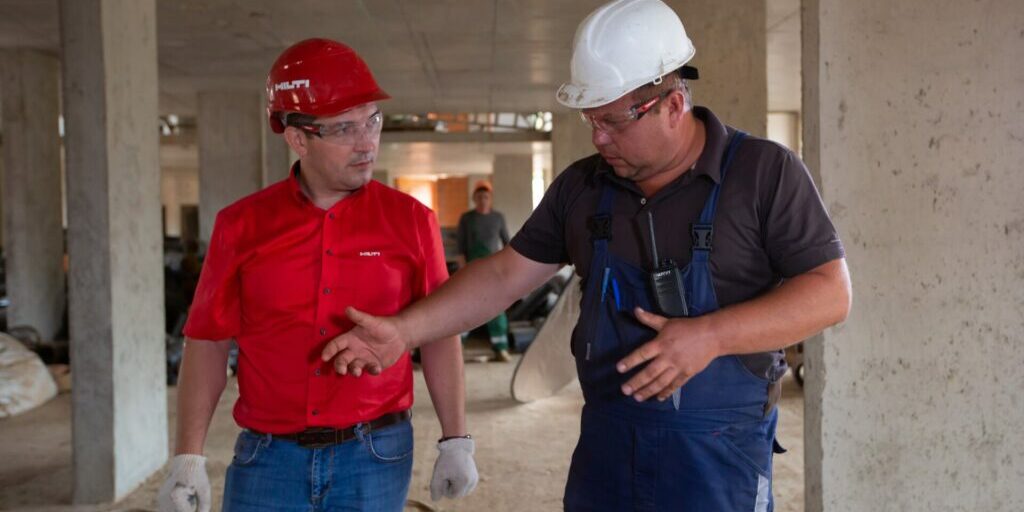The ROI of BPA: How Business Process Automation Benefits Construction

Business process automation (BPA) uses advanced technology to eliminate repetitive tasks, so your team can focus on the work that matters.
That sounds good, but what does it mean?
Let’s look at employee time tracking as an example.
Here’s what we cover:
- Business process automation (BPA) for payroll and cost accounting
- Business process automation saves time and money and improves accuracy
- Business process automation (BPA) speeds reporting
- Business process automation (BPA) = Smart workflows
- Business process automation + Smart workflows = Recurring ROI
- Business process automation (BPA) improves collaboration, too
- The ROI of collaborative software: A Case Study
- Business process automation for better project management
Business process automation (BPA) for payroll and cost accounting
The 2021 JBKnowledge report found that only around half (60%+/-) of construction firms use technology for daily reporting and time management.
That means the other 40%-50% of organizations still use manual entry time cards for their employees. So, either a supervisor is responsible for clocking time for her crews, or each employee is submitting their own.
Then, the office staff has to:
- Decipher the hand-written time cards,
- Manually enter the data into the payroll system, accounting software, or ERP,
- Expense the time against the correct project, work package, or task group; and finally,
- Process payroll.
How much time does that take, and how many people are involved in that process?
Too much time and too many people. And the larger the organization, the more time, people, and resources are wasted, and the more it costs.
Business process automation solves this problem and is already in your construction management software.
Instead of wasting time with manual entry, employees log in to the mobile app at their assigned work locations, and business process automation software does the rest.
The software tracks employees’ time and expenses against their work packages and transfers that data directly into the company’s ERP or accounting software.
That means at the end of the pay period, payroll is loaded, prepared, properly expensed, and ready to deploy at the push of a button.
Business process automation saves time and money and improves accuracy
At the very minimum, this simple payroll automation saves at least two-person hours a week or more per work crew.
- Supervisors no longer need to
- collect,
- verify, and
- submit time cards.
- Office staff no longer need to
- decipher handwritten data,
- manually enter data in the system
- assign work hours to cost codes.
- No more back and forth between supervisors and office staff verifying
- which project and
- how to apply employee time to work packages.
As an added benefit, the automated processing dramatically reduces the likelihood of errors and omissions, which means
- Fewer discrepancies,
- More accurate reporting, and
- Better decision-making for future resource allocation.
Business process automation (BPA) speeds reporting
Let’s dive deeper into process automation with our employee management example.
It’s Friday afternoon, the end of the pay period, and the work crews have left the job site for the weekend.
The business process automation software has expensed the completed work against the budget and the project schedule. The data is in the reporting software, and the site superintendent and project manager review the results.
- Some work packages are progressing ahead of schedule,
- Most of the work is tracking right on schedule,
- But some work packages need to catch up to schedule.
The project manager and site superintendent have decisions to make.
They need to reallocate their resources for next week by pulling crews from the work tracking ahead of schedule and reassigning those crew members to the work packages falling behind.
The only trouble is that everyone’s gone for the weekend, neither the project manager nor the site superintendent has the contact information for every person they need to talk to, and neither wants to spend Friday evening tracking everyone down.
Business process automation (BPA) = Smart workflows
By coupling process automation with innovative workflow tools, the collaborative project management software can manage information handoffs between different groups, provide statistical data on bottlenecks, and even update work assignments and project schedule changes in real-time.
That means that with minimal intervention, the project manager and site superintendent can reallocate their resources and go home for the weekend with complete confidence that their work crews will know where to report Monday morning and what work to get started on when they arrive.
Business process automation + Smart workflows = Recurring ROI
Real-time reporting and on-the-spot resource allocation save countless hours for management. And targeted work assignments save endless back-and-forth between crew leaders, their craft workers, and supervisors.
- No more missed work assignments.
- Better resource allocation
- Less time task-switching
- Fewer work errors
- Countless instances of costly re-work avoided
Business process automation (BPA) improves collaboration, too
Communication on the job site is critical to avoid conflicts, confusion, and delays.
Unfortunately, the fragmented nature of construction work and the number of subcontractors required to complete a project means communicating across multiple channels and organizations is always difficult and fraught with errors.
Crucial information is often lost during handoffs between trades and functions. These missed opportunities cause untold damages in coverage lapses, missed assignments, work errors, and the rework they cause.
Fortunately, collaborative project management software with integrated business process management systems can help.
The ROI of collaborative software: A Case Study
According to this McKinsey study, one contractor’s experience showed why it is vital to implement digital solutions that promote and support collaboration among different parties.
In this case, site workers struggled with defects in their supplier’s material but had no way of effectively communicating their struggles.
Due to persisting defects, workers had to either fix defective products or wait for replacements. As a result of this unplanned rework, labor costs increased, and the project fell behind schedule.
But by taking advantage of collaborative project management software, the contractor could easily communicate the issues by tagging defects. Then, the software sent alerts and contextual images back to the supplier in real-time.
As a result, the supplier could see the defects instantly, run root-cause analyses with its factory team and reduce defects.
Thanks to the collaborative effort, the contractor’s job site experienced a 12 percent reduction in rework hours.
Business process automation for better project management
Business process automation (BPA), coupled with intelligent workflow software, minimizes manual data entry. It automatically moves standardized information to the following process with minimal human intervention.
BPA and intelligent workflow technology can streamline a variety of tasks in construction, from project management to accounting, reporting, and resource management.
Construction companies looking to improve efficiency and save time, money, and valuable resources can benefit by incorporating an integrated collaborative project management solution.
Contact your Linarc representative today and see how cloud-based software built for the construction industry can help you take your business process management plan to the next level.




